Let’s visit Moravia, the eastern part of the Czech Republic today! I have a toothsome recipe for Moravian kolache (plural) for you, a sweet treat made from yeast dough. They’re characterized by double filling: cream cheese inside, plum jam on the top.
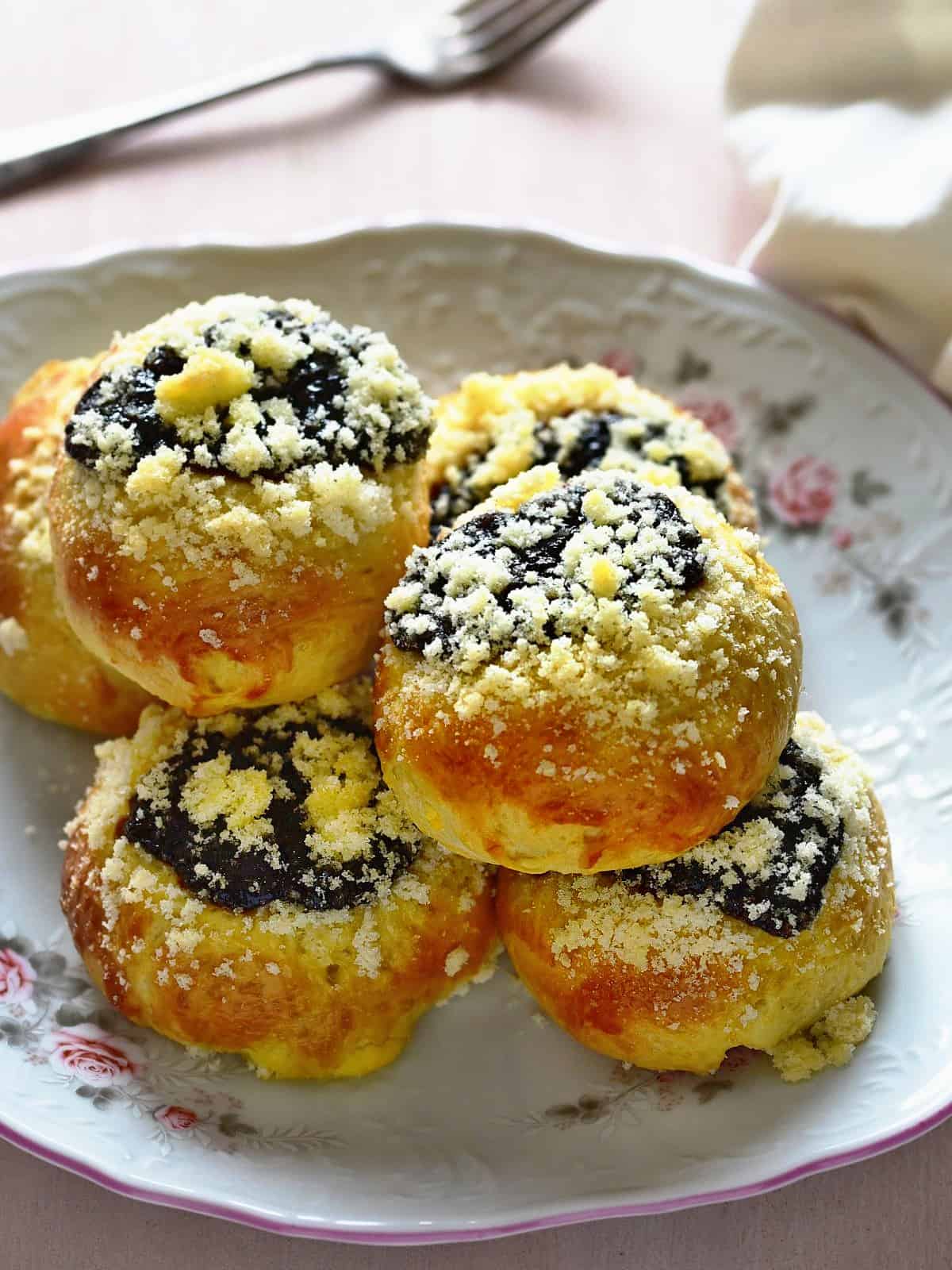
➜ Moravian kolache or Dvojctihodné koláče?
I’ll tell you a little secret. The Czech Republic contains three historical areas, Bohemia, Moravia, and Silesia. These kolache are called Moravian only by us Bohemians, but in Moravia, they call them Dvojctihodné koláče.
The word Dvojctihodné means that they are filled with two different varieties of filling. You will find creamy cheese filling inside, usually made from Czech tvaroh, which is a type of fresh cheese. Plum jam is then placed on the top and the whole beauty is sprinkled with streusel topping (drobenka).
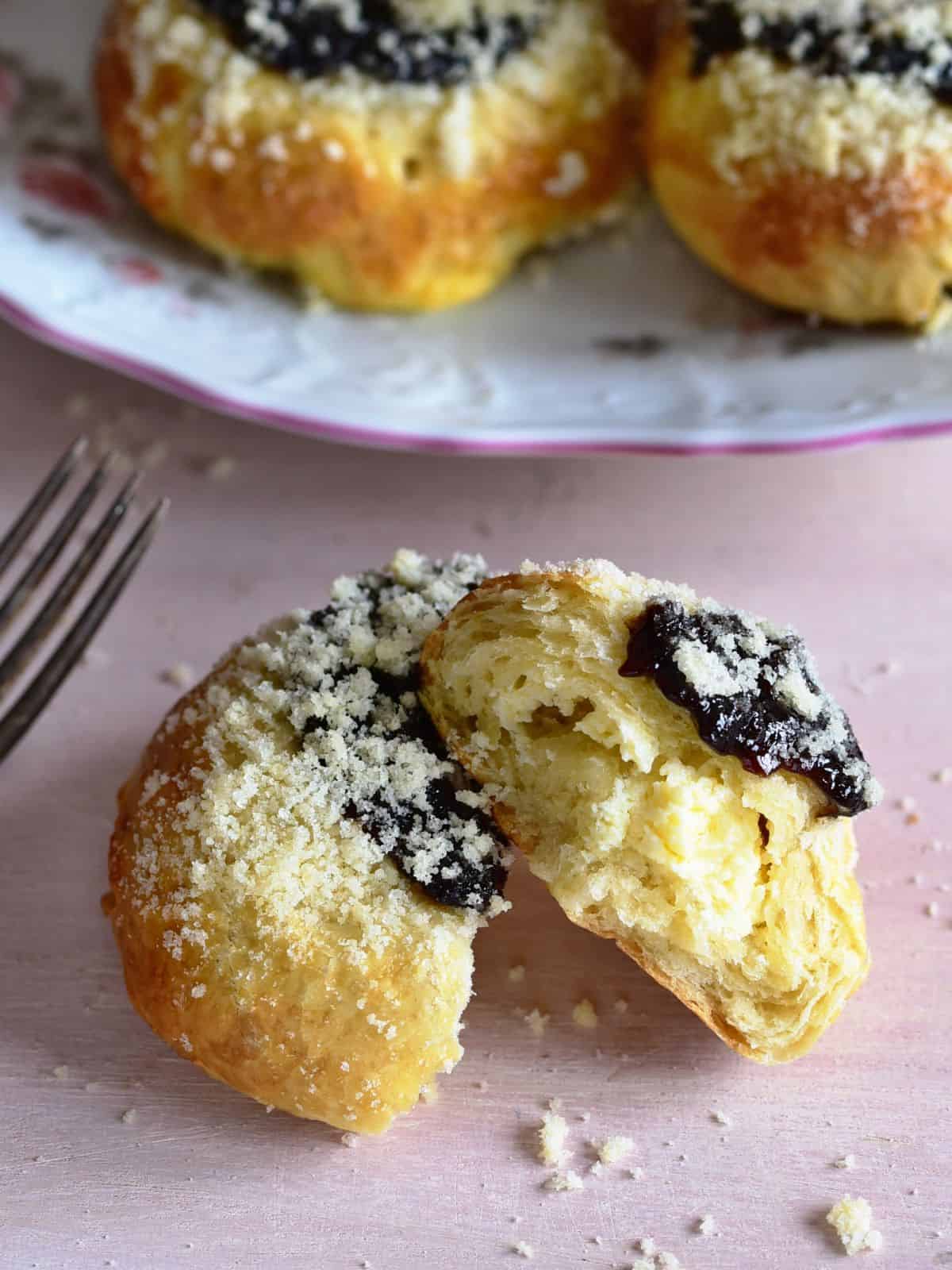
NOTE: It takes some time to make Moravian kolache because they are based on yeast dough. Plan ahead!
TIP: Here is a recipe for classic Czech kolache
➜ Pronunciation
I recorded a short audio clip on how to pronounce the Czech word "moravské koláče".
➜ Ingredients
You’ll need ingredients for yeast dough, two kinds of filling (cream cheese and plum jam), and a streusel topping. Plus, one egg for the egg wash to brush kolache before putting them to bake into the oven.
Ingredients for yeast dough:
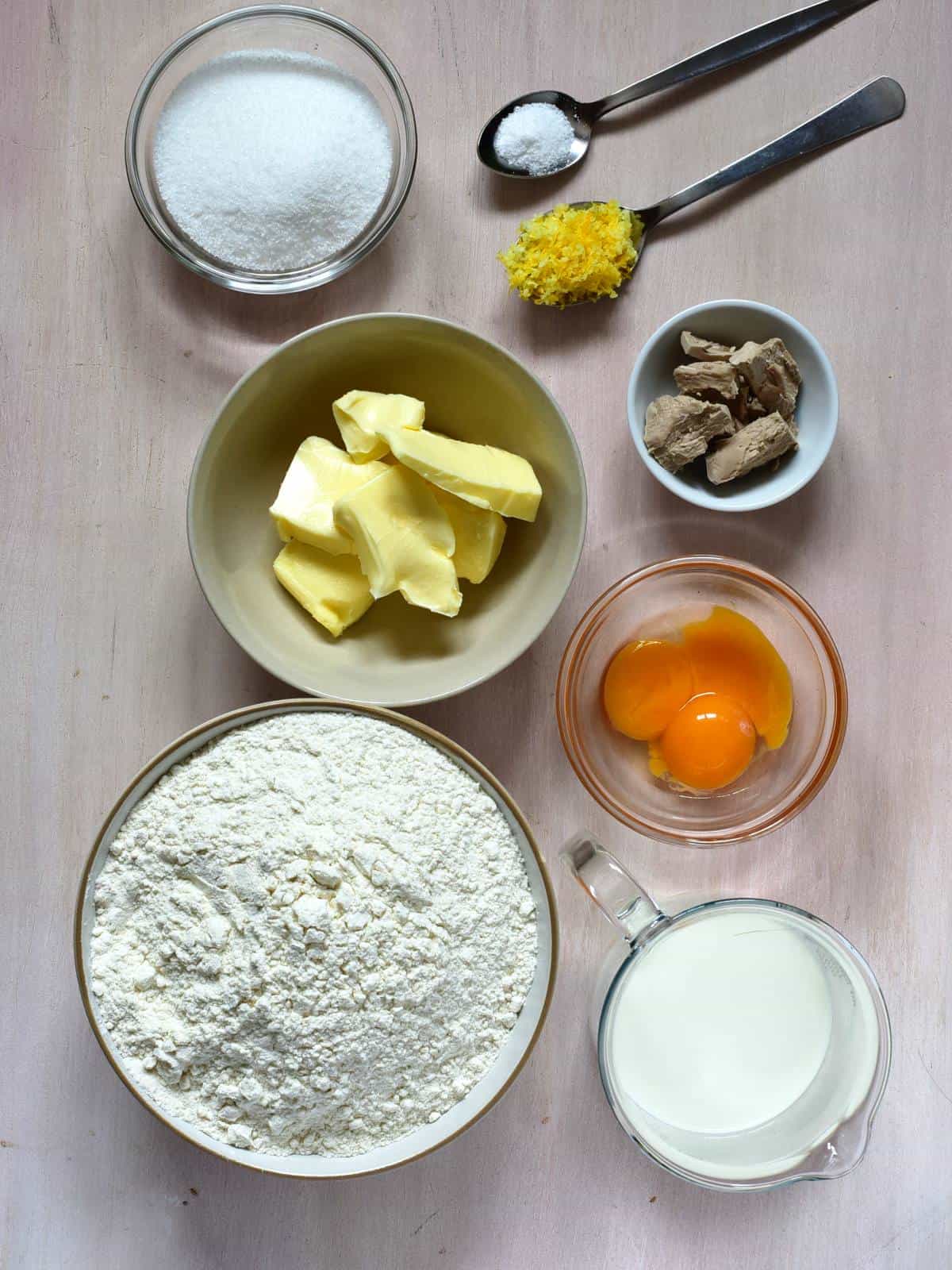
- All-purpose flour
- Granulated sugar
- Butter, unsalted
- Fresh yeast, or active dry yeast
- Milk, lukewarm
- Lemon zest, freshly grated
- Egg yolks
- Vanilla essence
- Pinch of salt
✅ You’ll find the exact amount of ingredients below in the recipe card, which you can also print out.
Fillings:
- The Moravian kolache inside filling: Czechs usually make a quark filling out of tvaroh, called tvarohová nádivka. However, tvaroh is not a usual ingredient worldwide. I recommend using any tried cream cheese filling (or ricotta filling), which works fine for you. TIP: A proven substitute for tvaroh in the USA is farmers’ cheese.
- Plum jam is the top filling: We can get plum jam or plum butter in the Czech Republic almost in every store. If you’ve trouble buying plum jam in your country, use any solid jam you can get.
Ingredients for streusel topping:
That’s easy: grab all-purpose flour, a piece of butter, and granulated sugar, mix everything, and you’ll get a beautiful topping for your kolache!
➜ Instructions
Let’s roll up our sleeves and move to the kitchen! We’re gonna make the yeast dough first.
STEP 1: Place flour in a mixing bowl, make a dimple in the middle. Put crumbled yeast there, sprinkle with 1 teaspoon of sugar, pour over 1/2 cup of lukewarm milk (photo 1). Mix with a fork until a runny batter is created in the middle (photo 2). Cover the bowl with plastic wrap and let rise in the warm place for 30 minutes (photo 3).
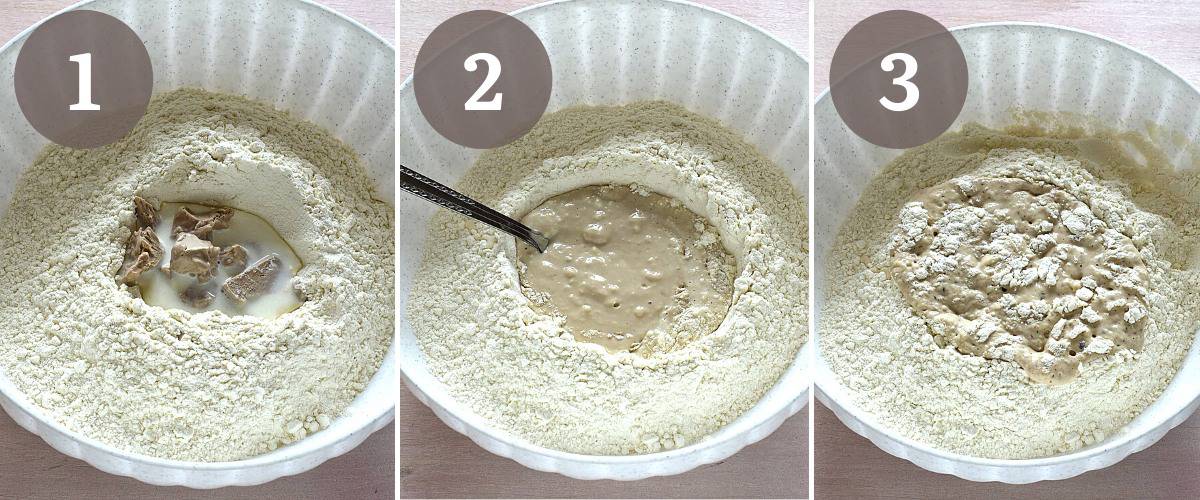
STEP 2: Meantime, melt butter over low heat, mix it with egg yolks, rest of lukewarm milk, vanilla essence, lemon zest, and salt. Whisk until combined.
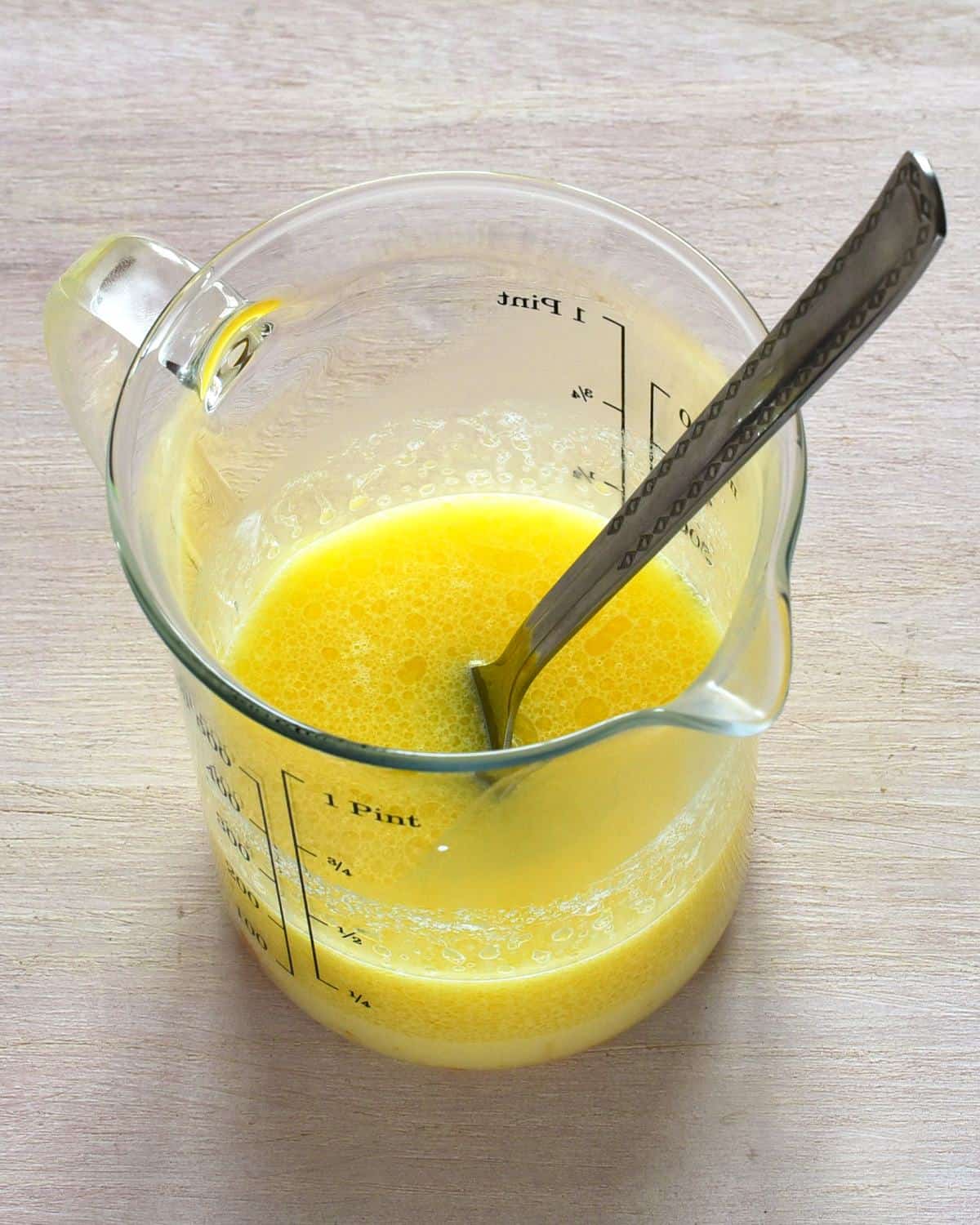
STEP 3: Add whisked butter-egg liquid to the bowl with flour and activated yeast, add sugar.
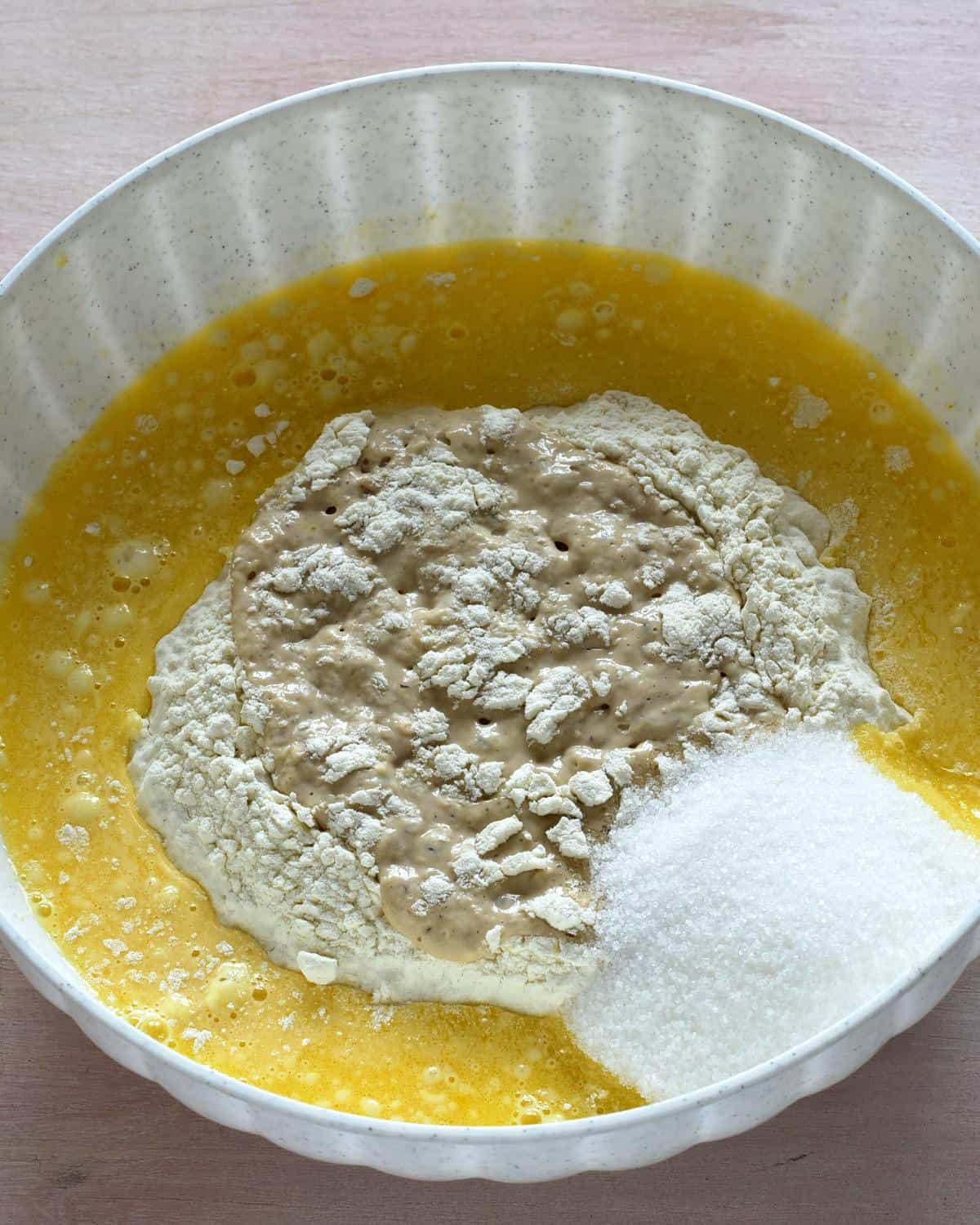
STEP 4: Knead a smooth dough: Start mixing with a fork, then use your hands to make a nice dough. It takes about 5-8 minutes. Or use a kitchen mixer with proper attachment if you have one. Let the dough rise for 45 minutes.
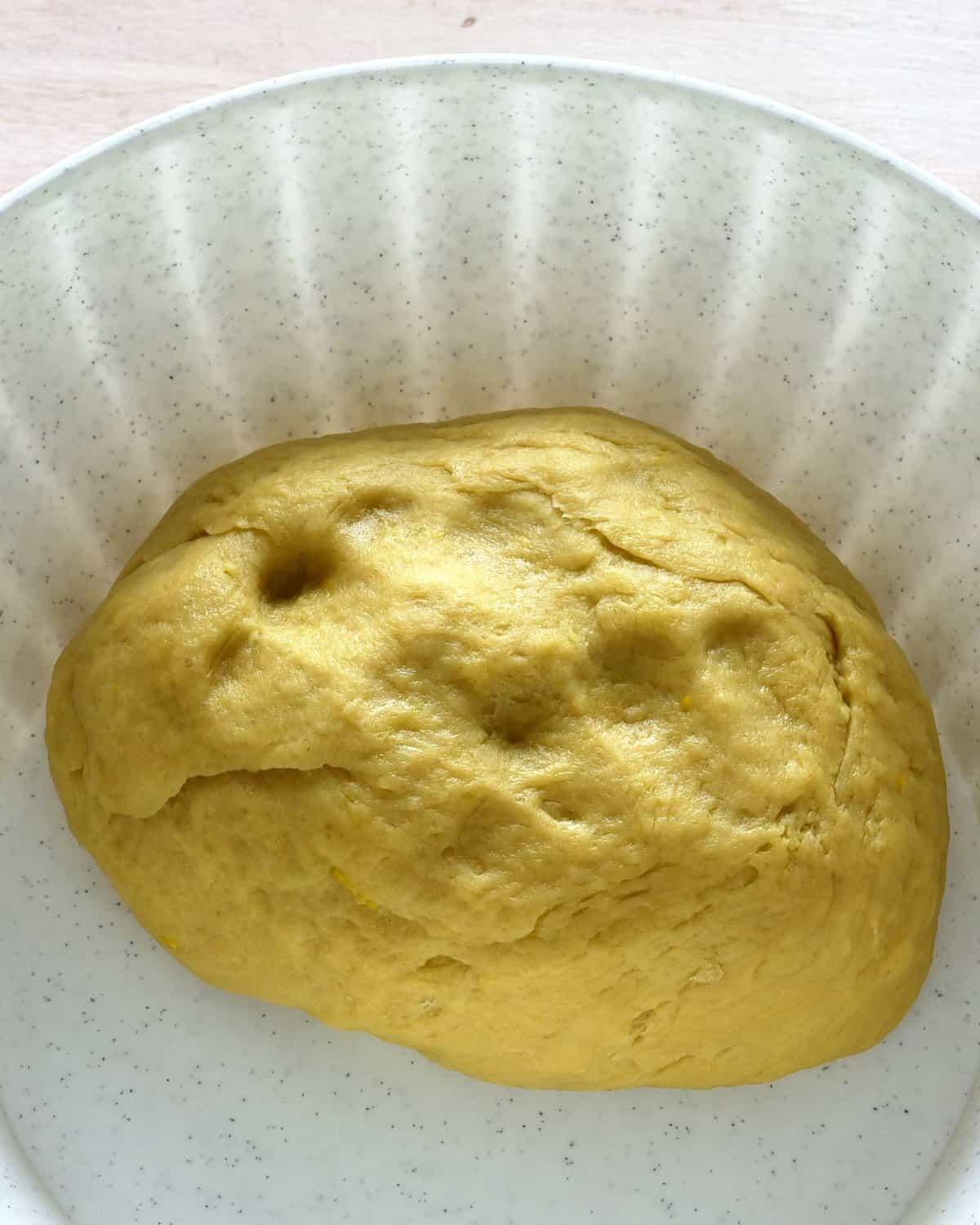

⤍ Learn how to make dough rise in the oven.
STEP 5: Meanwhile, make cream cheese (tvaroh, quark) filling. Get plum jam ready.
STEP 6: Make streusel topping: just mix flour, butter, and sugar using your fingers, create small coarse crumbles.
STEP 7: When the dough has risen, dump it on the worktop. The dough should not stick, if it does, flour the worktop a little.
Roll the dough out into a square about ¼ inch thick – the rolled dough can’t be too thin! Divide into 16 equal pieces.
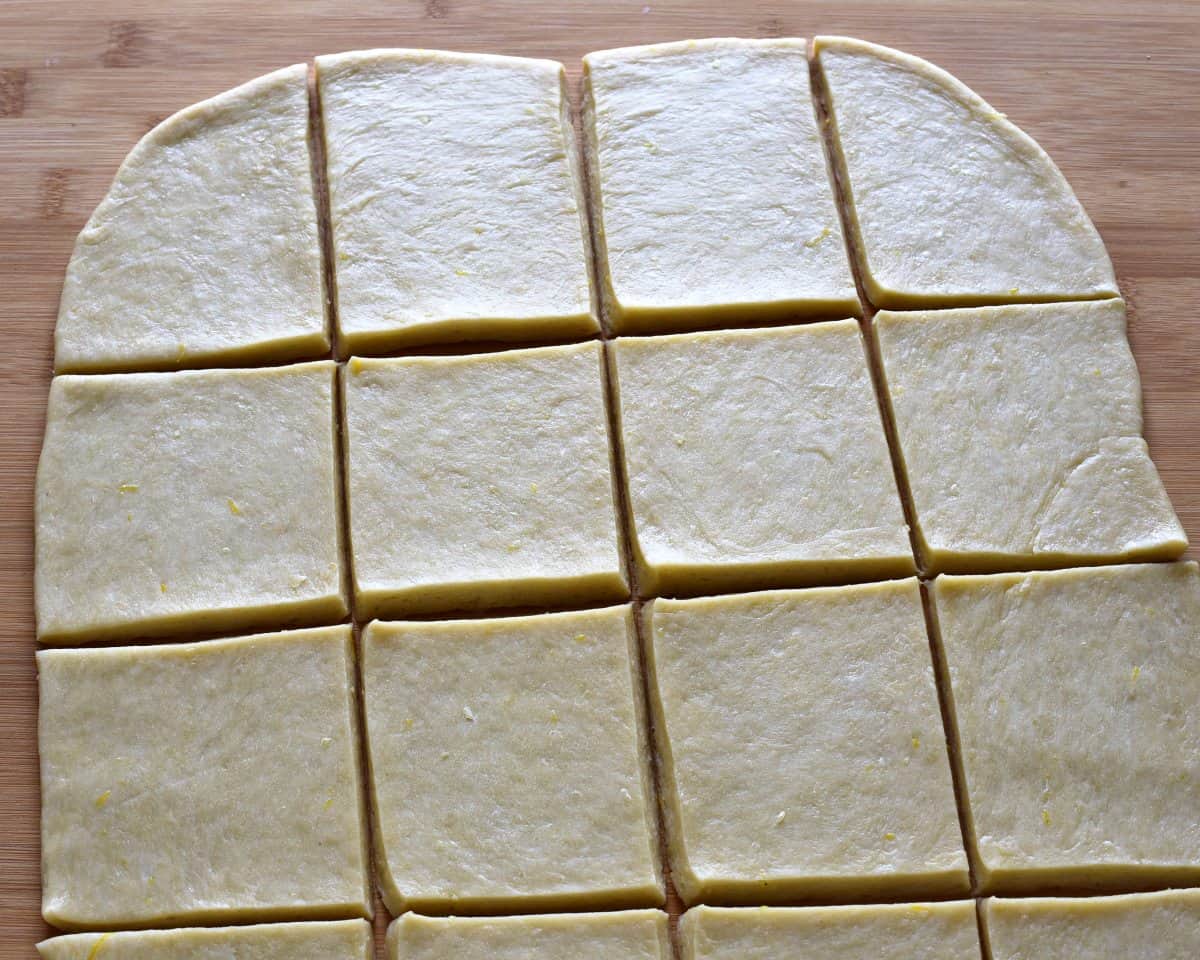
STEP 8: Place 1-2 teaspoons of cream cheese filling in the middle, then fold the opposite sides and seal together carefully, shape the filled dough pieces between your palms into a ball.
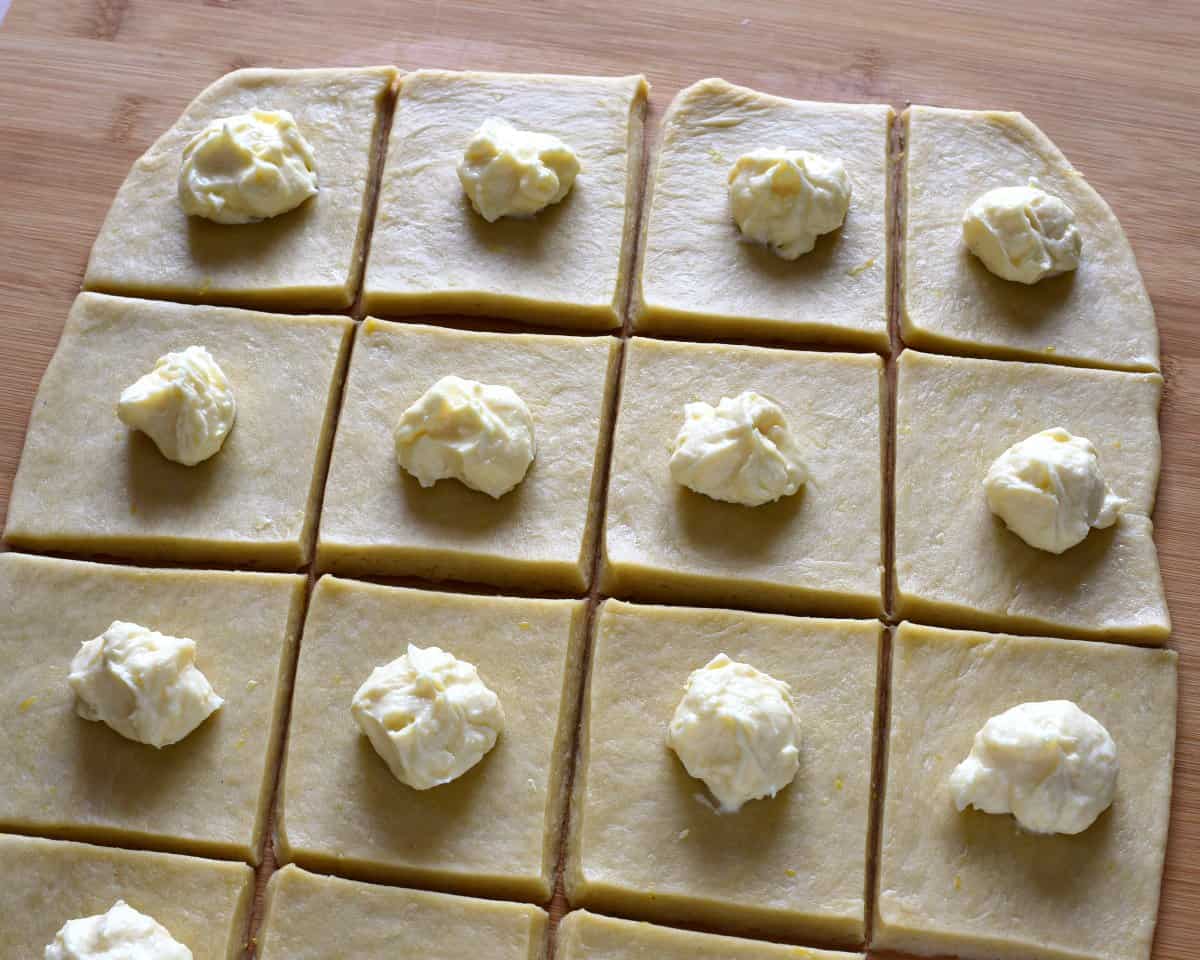
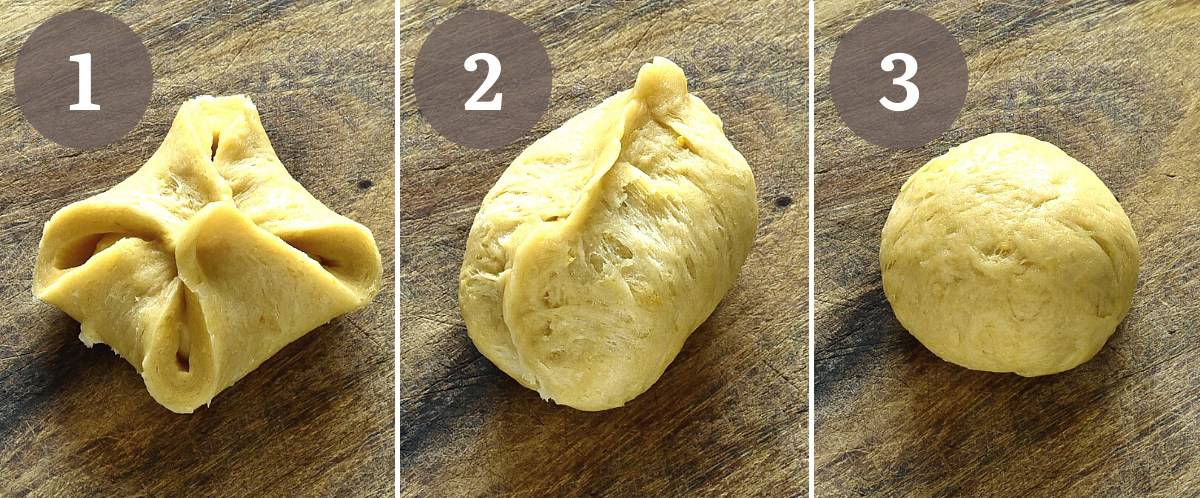
STEP 9: Transfer the kolache to a baking sheet lined with parchment paper. Place each kolach with the seamed side down. Let the kolache rise for another 30 minutes.
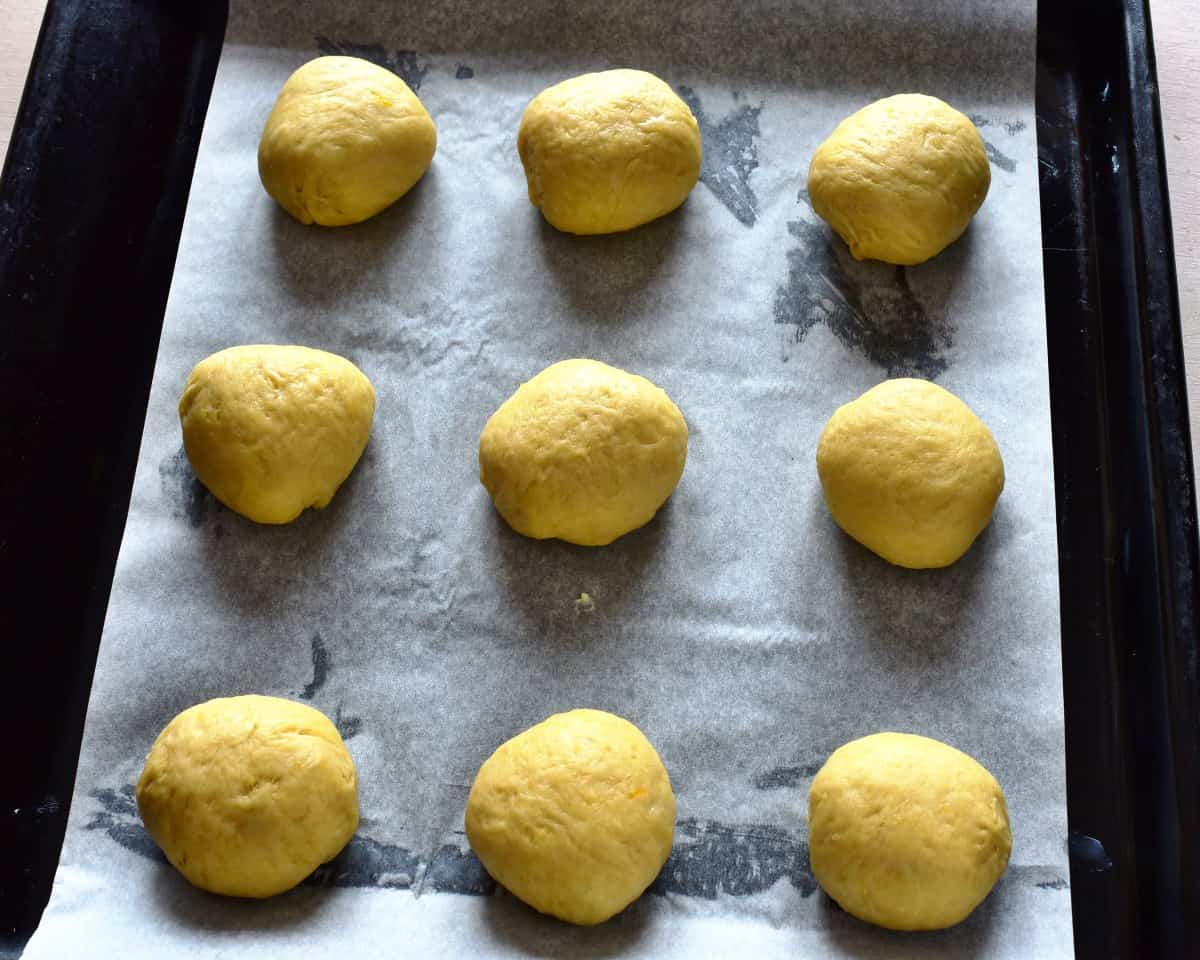
STEP 10: Preheat oven to 340 °F (170 °C).
STEP 11: For an egg wash, whisk one egg in a bowl using a fork. Press each kolach in the middle, for example with a joint of your index finger.
STEP 12: Brush kolache with egg wash and fill holes with plum jam. Sprinkle with streusel topping.
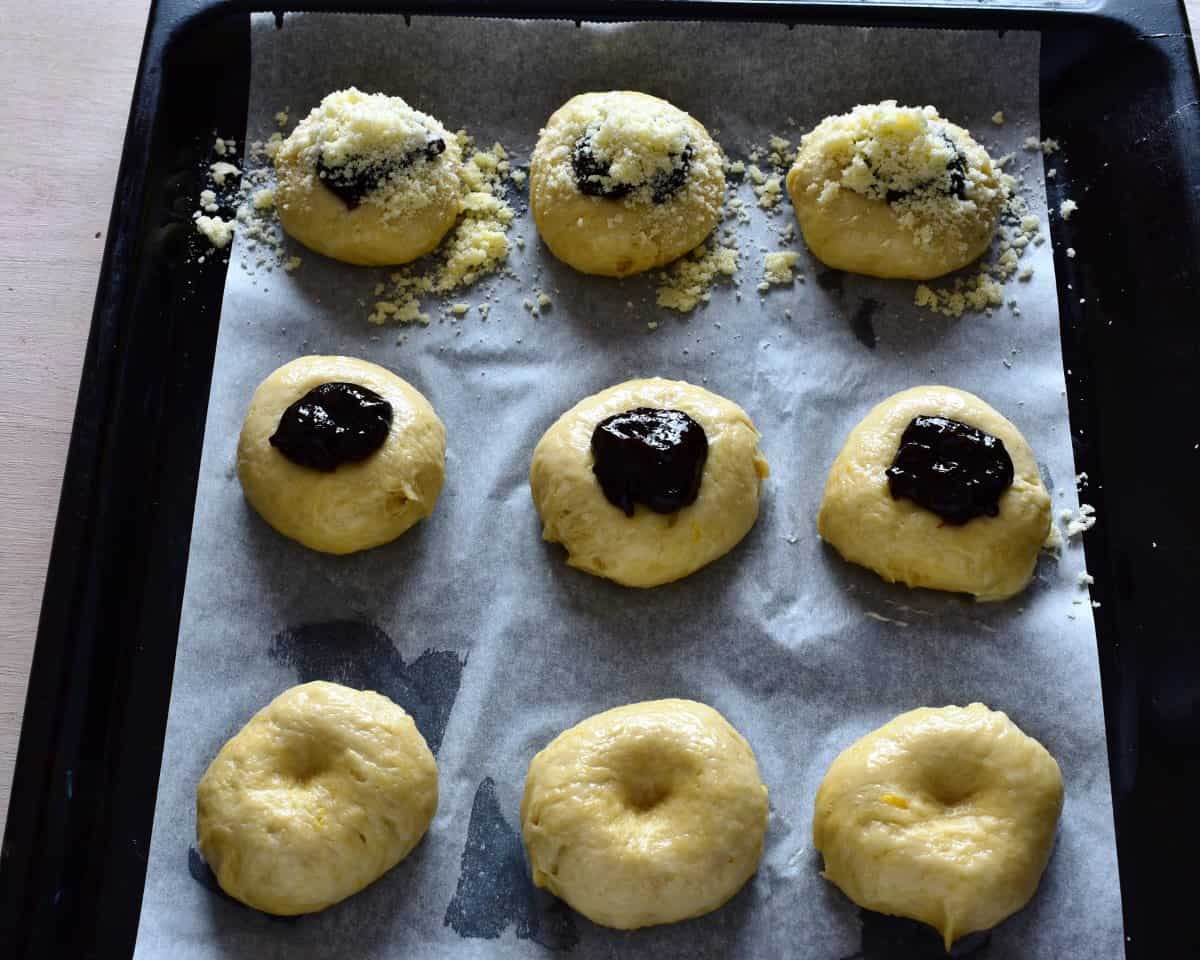
STEP 13: Bake kolache for 20-25 minutes until golden brown.
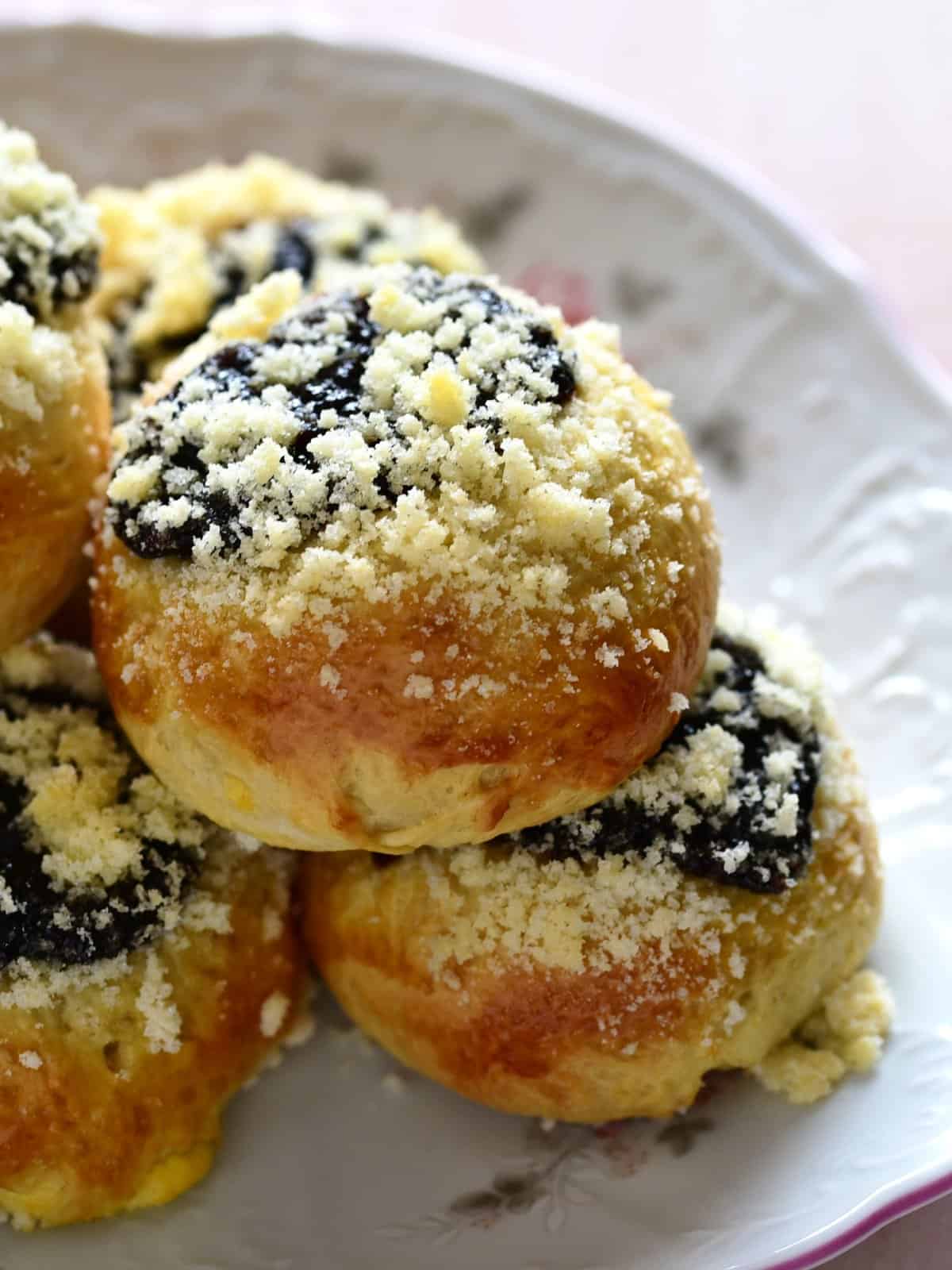
➜ Useful tips
- Make the cream cheese filling ahead, so that it’s at room temperature when you start filling the kolache. If you used too cold cream cheese filling, the yeasted dough could not bake properly.
- If the plum jam is too thick, mix it with a spoon of rum. Rum thins the jam and adds a wonderful flavor to the filling. If the jam is too thin or runny, add gingerbread crumbs (that’s how plum jam is thickened in the Czech Republic).
- Short education around the kolache word. Koláč is a kolach and means 1 piece in Czech. Koláče or kolache are 2 and more pieces. Sometimes, I see the form kolaches, the double plural version used mostly by US people.
If you want to try another Czech delicacy, see the recipe for české vdolky, little fry cakes!
More Czech yeast dough pastries:
- Jidáše – Czech Easter food
- Wallachian frgál – sweet goodness from Moravia
- Vánočka – Christmas sweet bread
- Czech plum kolaches
- Poppy seed kolache
- Czech tied kolache – vázané koláče
Tried this recipe?
Leave a review down in the comments! ⭐⭐⭐⭐⭐
Follow me on Facebook and Pinterest. Subscribe to my newsletter. Send me any question about Czech cuisine to my e-mail. I love hearing your feedback!
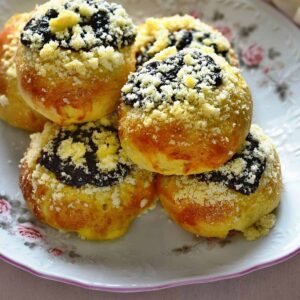
Moravian Kolache – Moravské koláče
Ingredients
Yeast dough:
- 4 cups (520 g) all-purpose flour
- ¾ cup (180 ml) milk lukewarm
- 1 and ½ oz (40 g) fresh yeast or 2 teaspoons of dry active yeast
- 1 stick (110 g) butter unsalted
- 2 egg yolks
- ½ cup (100 g) granulated sugar
- lemon zest freshly grated from 1 lemon
- vanilla essence
- ½ tsp salt
Cream cheese filling (any tried which works for you - about 7 oz / 200 g)
Plum jam (about 7 oz / 200 g)
Streusel topping:
- 1 stick (110 g) butter
- ⅔ cup (130 g) granulated sugar
- 1 cup (130 g) all purpose flour
You’ll also need:
- 1 whole egg for egg wash
- flour to dust workspace
Instructions
- Place flour in a mixing bowl, make a dimple in the middle. Put crumbled yeast there, sprinkle with 1 teaspoon of sugar, pour over ¼ cup of lukewarm milk. Mix with a fork until a runny batter is created in the middle. Cover the bowl with plastic wrap and let rise in the warm place for 30 minutes.
- Meantime, melt butter over low heat, mix it with egg yolks, rest of lukewarm milk, vanilla essence, lemon zest, and salt. Whisk until combine.
- Add whisked butter-egg liquid to the bowl with flour and activated yeast. Add sugar.
- Knead a smooth dough: Start mixing with a fork, then use your hands to make a nice dough. It takes about 5-8 minutes. Or use a kitchen mixer with proper attachment if you have one. Let the dough rise for 45 minutes.
- Meantime, make cream cheese (tvaroh, quark) filling. Get plum jam ready.
- Make streusel topping: mix flour, butter, and sugar using your fingers to create small coarse crumbles.
- When the dough has risen, dump it on the worktop. The dough should not stick, if it does, flour the worktop a little.
- Roll the dough out into a square thick about ¼ inch – the rolled dough can’t be too thin! Divide into 16 equal pieces.
- Place 1-2 teaspoons of cream cheese filling in the middle, then fold the opposite sides and seal together carefully. Shape the filled dough pieces between your palms into a ball.
- Transfer the kolache to a baking sheet lined with parchment paper. Place each kolach with the seamed side down. Let the kolache rise for another 30 minutes.
- Preheat oven to 340 °F (170 °C).
- For an egg wash, whisk one egg in a bowl using a fork. Press each kolach in the middle, for example, with a joint of your index finger.
- Brush kolache with egg wash and fill holes with plum jam. Sprinkle with streusel topping.
- Bake kolache for 20-25 minutes until golden brown.
Notes
- Makes 16 Moravian kolache.
- Make the cream cheese filling ahead, that it’s at room temperature when you start filling the kolache. If you used too cold cream cheese filling, the yeasted dough could not bake properly.
- If the plum jam is too thick, mix it with a spoon of rum. Rum thins the jam and adds a wonderful flavor to the filling. If the jam is too thin or runny, add gingerbread crumbs (that’s how plum jam is thickened in the Czech Republic).
DISCLAIMER: Because I come from Central Europe, my recipes are based on metric units such as grams or milliliters. Check out how I convert metric units to the U.S. system:
Conversion chart Nutrition Disclosure

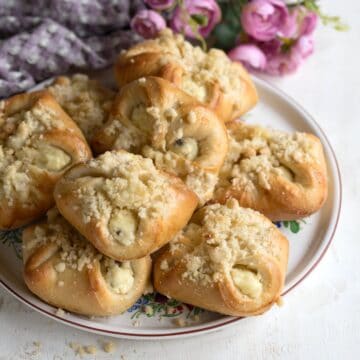
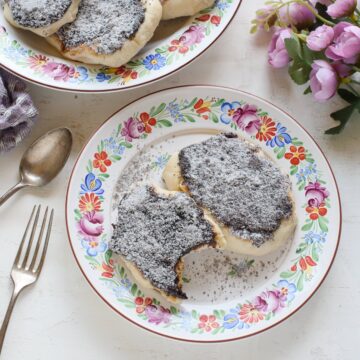
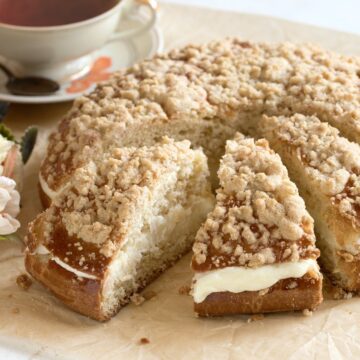
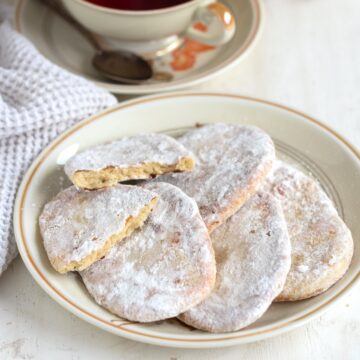
Nancy Agnew
enjoyed very much. worth the time
Petra Kupská
Thank you so much and I'm glad the kolaches turned out as they should!
Michelle
Can you give recipe instructions on the cream cheese filling?
Petra Kupská
Ahoj Michelle, I only have this cream cheese filling recipe on my blog. However, this recipe calls for tvaroh, a fresh Czech cheese that is hard to find outside the Czech Republic. If you're from the U.S., please try to look up a good recipe using local ingredients that have worked well for home bakers.
Suzanne
Thank you, a fantastic recipe !
My father is Moravian and I’ve never made these before, my Mother did make them when we were kids always delicious
So happy with how they turned out, just beautiful and tastes amazing
Thank you I’ll be making them again
Petra Kupská
I thank you for your lovely feedback! 🙂 These double-filled kolaches are one of the more challenging to make, but the result is worth it! I'm so glad they turned out well for you.
Marie
I've made this recipe a few times, and they are always a big hit with my family!
Thank you for creating this blog and posting all of these recipes in English! We lost most of my Moravian Babi's recipes when she died, and your recipes have tasted just like some of hers. I live in America, and it was hard to find authentic Czechoslovakian recipes in English that haven't been "Americanized." My dad is thrilled to have the tastes of his childhood again, and I am so happy to continue learning more about my heritage through baking 🙂
Petra Kupská
Hi Marie, thank you very much for your kind words! I'm glad that the recipes on my site help you to better tap into your Czech heritage. Plus, Moravia, the eastern part of the Czech Republic, has wonderful traditions and lots of tasty regional recipes. Wishing you good luck with Czech baking and if you have any question, feel free to contact me 🙂
Sandy
My grandma was from Moravia and always made her filling with cottage cheese instead of cream cheese. They were so goood.
Petra Kupská
Thank you for your comment, Sandy! In the Czech Republic, we traditionally make Kolache with tvaroh cheese filling, but I know that this kind of cheese is not easy to get outside the Czech Republic. That's why many people use cottage cheese or cream cheese.